The Museum That Never Was, Part 2
The good news about the Debbie Reynolds Auction is that there was an auction at all. She saved all these items from oblivion, and now they’re around for us to see. Debbie’s main interest was in the costumes, but there’s plenty of other stuff in her collection, like this concept painting from the 1963 Cleopatra. Just to illustrate how things can change from the early concept stages to final production…
Now that Debbie is relinquishing her stewardship, we can reasonably assume that, whoever may wind up with this or that individual piece, the collection as a whole is safe for the forseeable future; nobody pays $5 million for a dress if they’re planning to leave it wadded up on the bottom shelf of the linen closet, or set it out on the curb next time the Salvation Army truck comes around. But where are the pieces going, and what precisely is going to become of them? Collectors can be a secretive and territorial bunch, not always quick to share. (And who can blame them? There are a lot of unscrupulous people out there; see here for a mention of the mysterious fate of Marcel Delgado’s production photos from The Lost World [’25] and King Kong [’33].) In the auction catalogue from Profiles in History, there’s a special plea from London’s Victoria and Albert Museum, asking for the loan of certain items in the collection for an exhibit on Hollywood costumes planned for October 2012 through January 2013. Debbie had promised curator Deborah Nadoolman Landis the use of any costumes she wanted — until the need to sell torpedoed the arrangement; it’ll be interesting to see if any of the new owners come through for the V&A.
So the Debbie Reynolds Collection existed in the first place, and it’s (most likely) safe now; that’s the good news. The bad news is that it won’t be a collection anymore. True, last month’s auction was only 587 lots out of whatever (5,000? 10,000?) is the total. Does Debbie intend to sell only enough to pay her outstanding debts, then start again at Square One with what’s left? Perhaps, but she certainly sounds as if she’s in the process of washing her hands of the whole kit and kaboodle. That’s perfectly understandable, but it’s still a shame.
I’ll miss having the opportunity to wander through the halls of the Debbie Reynolds Hollywood Movie Museum, and to go back as often as time and resources would allow; I suspect a single day wouldn’t have been enough to see it all. It’s comforting to know that these things are in the hands of people who’ll appreciate them, but having them all together in one place would have made the museum so much greater than the sum of its parts. As Virginia Postrel says, “To understand the past you need a large sample. Only then can you separate idiosyncratic variation from broad trends.”
I hinted at this idea in Part 1, when I suggested mix-and-matching a Cleopatra costume from the 1930s, ’40s and ’60s. How instructive it would have been to compare costumes from the 1925 and ’59 versions of Ben-Hur; or Mutiny on the Bounty ’35 and ’62; or how Adrian dressed Charles Boyer as Napoleon in Conquest (’37) vs. how Rene Hubert and Charles LeMaire dressed Marlon Brando in Desiree.
Or take this shot of Katharine Hepburn as Mary of Scotland (1936). You can see Mary of Scotland any time you like, and maybe you have. But while you were taking in the lavish settings and costumes captured by Joseph August’s richly atmospheric, deeply shadowed black-and-white cinematography, did it ever occur to you that the gown Kate is wearing here…

…really looked like this? We enter so completely into the world of any black-and-white movie (and arguably, Mary of Scotland is not one of the best) that we tend to forget that anyone ever thought of them in terms of color. We think, perhaps, that the studios wouldn’t spend money on something the camera wouldn’t see. But think that one through: The actors would see it. If Katharine Hepburn’s costume had really been composed of the shades of black and gray that we see on screen and in the picture above, she would surely have acted differently than she did in this sumptuous red and gold garment. And the camera would certainly have seen that.
This is one of the things I most noticed in looking through the costumes in the catalogue, the striking variety of color in costumes and set pieces built for black-and-white movies. That gold gown from DeMille’s Cleopatra is another example; it may look silver on screen, but no, it was gold.
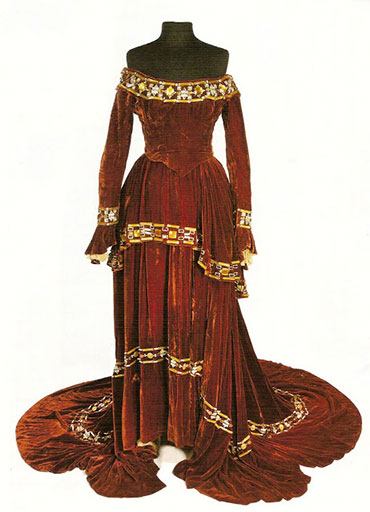
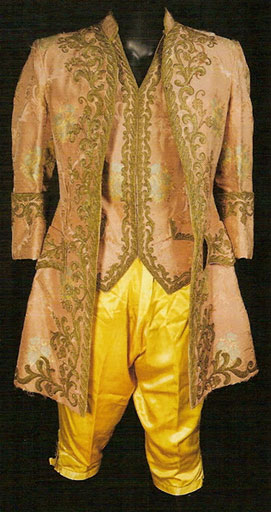
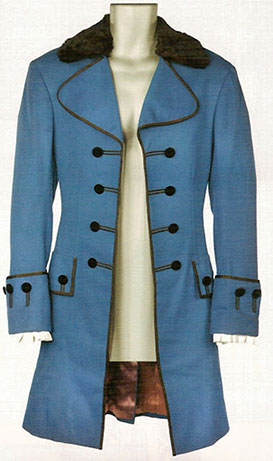
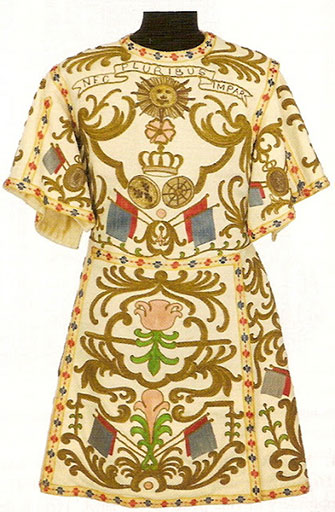
If you’re interested in a catalogue of your own, you can (at least as of this date) order it here from Profiles in History. If you don’t want to pay the $39.95 — and don’t mind not getting the quality high-gloss paper it’s printed on — you can even download the catalogue for free on PDF. But be warned: It’s 312 pages and will probably take quite a while to download (and even longer to print), and it’ll probably take up quite a chunk of your hard drive when it gets there.
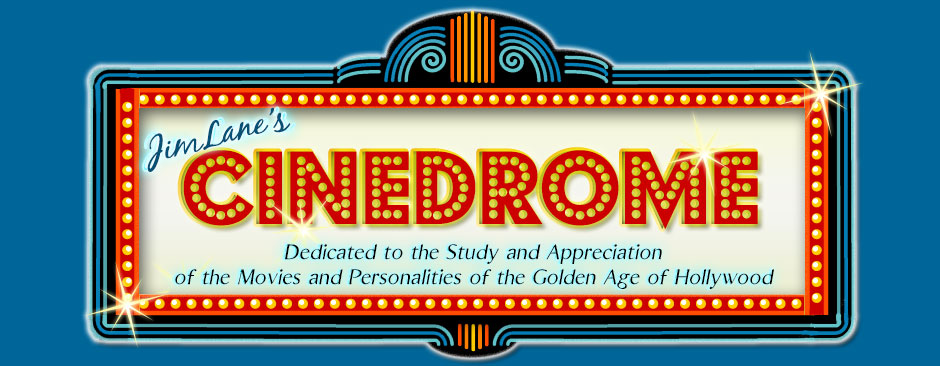
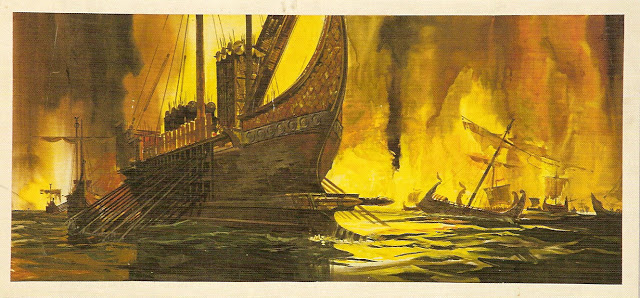
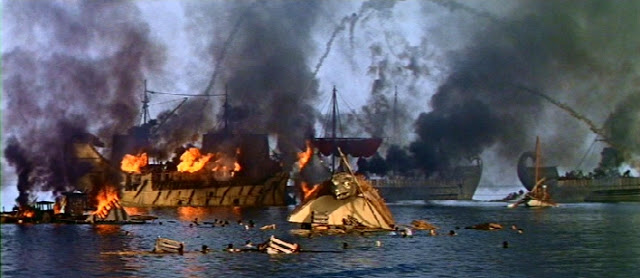
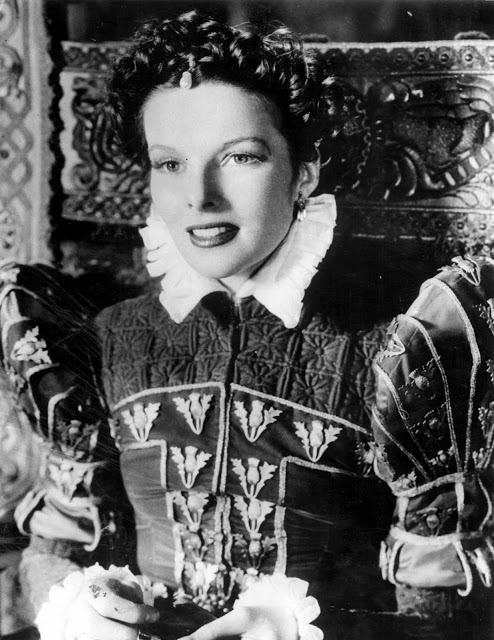
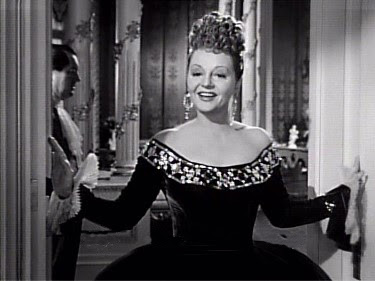
Welcome, Eve, and thanks for the tip on Vintage Film Costume Collector; a most interesting blog!
The more I learn about wardrobe and costuming, the more fascinated I become. Really enjoyed your post with so many gorgeous accompanying photos. One thing I’m learning is that even the wardrobes for major black and white films were often breathtakingly colorful and opulent. I thought you might be interested in a link to a blog (by a collector of fine taste) I follow…you may already know of him, but in case not: http://vintagefilmpropsandcostumes.blogspot.com/
Thanks, Dorian; your comments are always welcome. We can probably blame the bankruptcy of the Belle Island project on the current economy — but what was the excuse (not Debbie's, but everybody else's) for the 30 years before that?
As for the Monster Mash Blogathon, yes, my post is in the oven even now. Look for me to bring up the rear of the parade on Tuesday, when I chime in on The Beast from 20,000 Fathoms and The 7th Voyage of Sinbad.
Jim, thanks a million for sharing those wonderful pictures of the various pieces of Debbie Reynolds' collection in Part 2 of "The Museum That Never Was." Wouldn't it be great if at least some of Debbie's memorabilia was lent to museums around the country, if not the world? I blame this damn economy for the fate of Debbie's treasures!
On a more upbeat note, will you be contributing to the '50s Monster Mash Blogathon, already in progress until August 2nd? I'm sure I speak for all your readers when I say that with your encyclopedic knowledge of and love for classic movies, you'd surely whip up a terrific post!
Welcome, Allen, and thanks. And while you're here, let me return the compliment: kudos on your tribute yesterday to Hattie McDaniel on your Bit Part Actors blog; I urge my readers to check it out.
Thanks, Jim, for a fascinating look at what Debbie auctioned. Your notes are very interesting, and bear out the color pictures you included.
Let's hope the new owners are inclined to lend some (most) of the items to various museums around the country so they can be enjoyed by others.